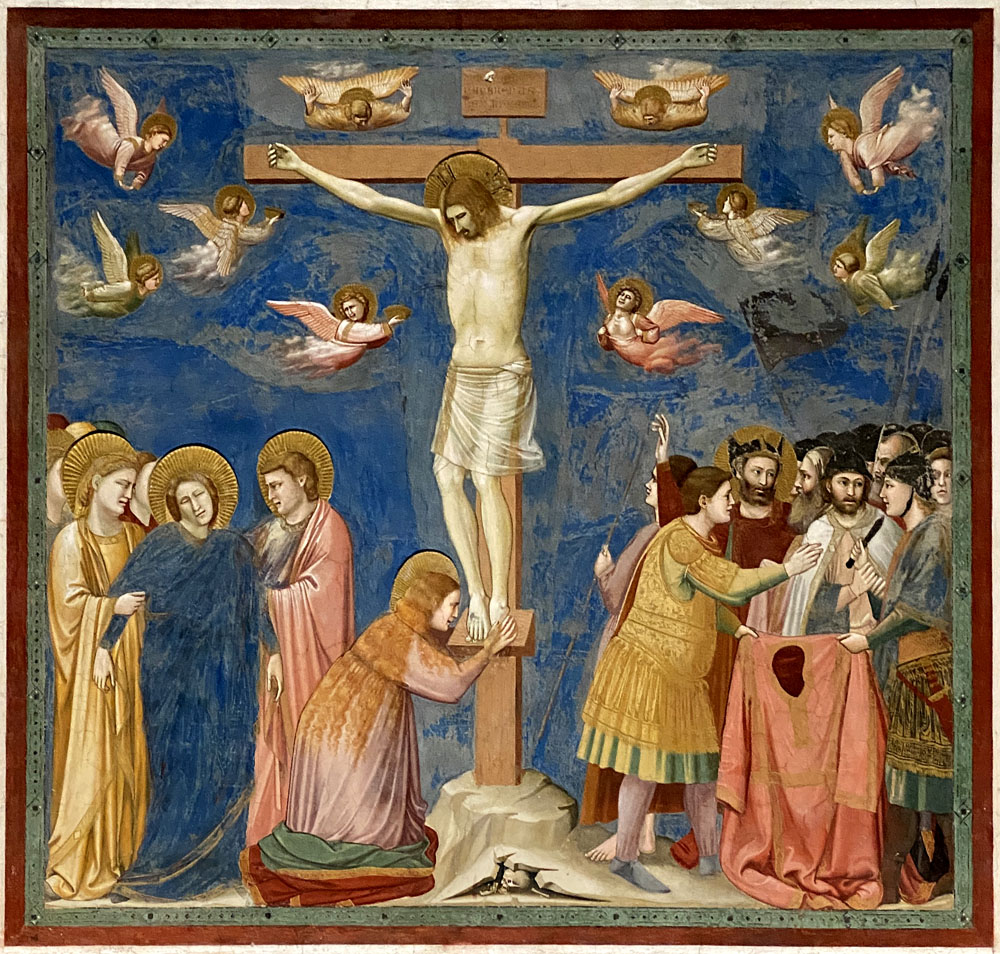The Crucifixion

1303-1305
Fresco
Scrovegni Chapel, Padua
This is the earliest example I have encountered of the Virgin Mary's faint, the exaggerated grief of the angels, and Mary Magdalene's clutching the base of the cross. All three details enhance the pathos of the image, a feature that grows in emphasis from this time onward.
In the right foreground the soldiers decide they will cast lots for Jesus' tunic rather than splitting it into pieces. As they hold it up the viewer can see that it has no seams. This detail is rich in theological significance. John 19:23 says they cast lots for the tunic specifically because it was seamless and thus fulfilled the prophecy in Psalm 21:19, "They parted my garments amongst them; and upon my vesture they cast lots." Commentators on the verse in John also take the tunic's seamlessness as symbolic of both the unity of the Church and the unity of Christ's divine and human natures.1
The man in red pointing to Jesus is the centurion who upon the former's death said, "Truly this man was the Son of God" (Matthew 27:55, Mark 15:39). He has a halo because he was often taken to be the same person as St. Longinus, the one who pierced Jesus' side and was cured of blindness by the blood that fell.2
View this image in full resolution.
Read more about images of the Crucifixion.
Photographed at the chapel by Richard Stracke, shared under Attribution-NonCommercial-ShareAlike license.
1 Glossa Ordinaria, V, 1313-14. Aquinas, Catena, IV, 581-82. The other gospels simply mention the casting of lots without further comment. See Matthew 27:35, Mark 15:24, and Luke 23:34.
2 See the page for St. Longinus for texts that identify the centurion as St. Longinus.